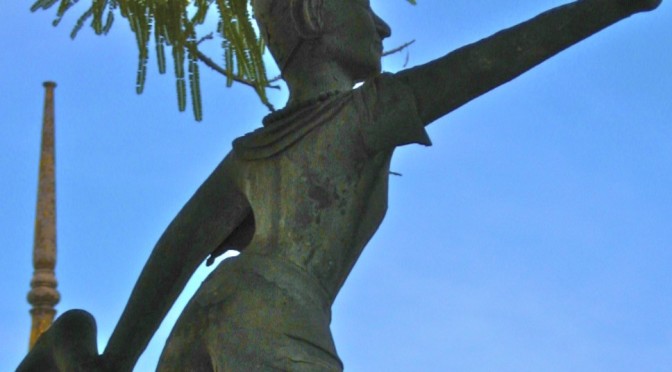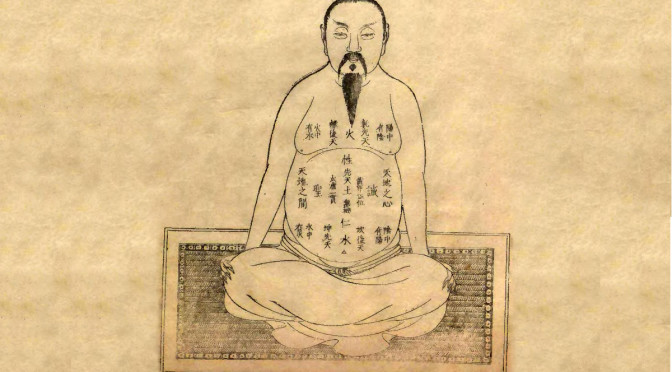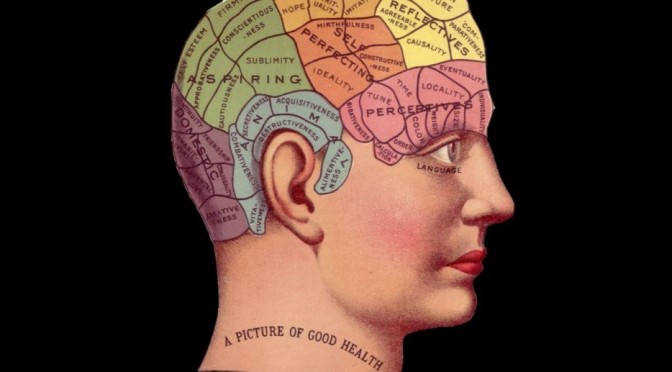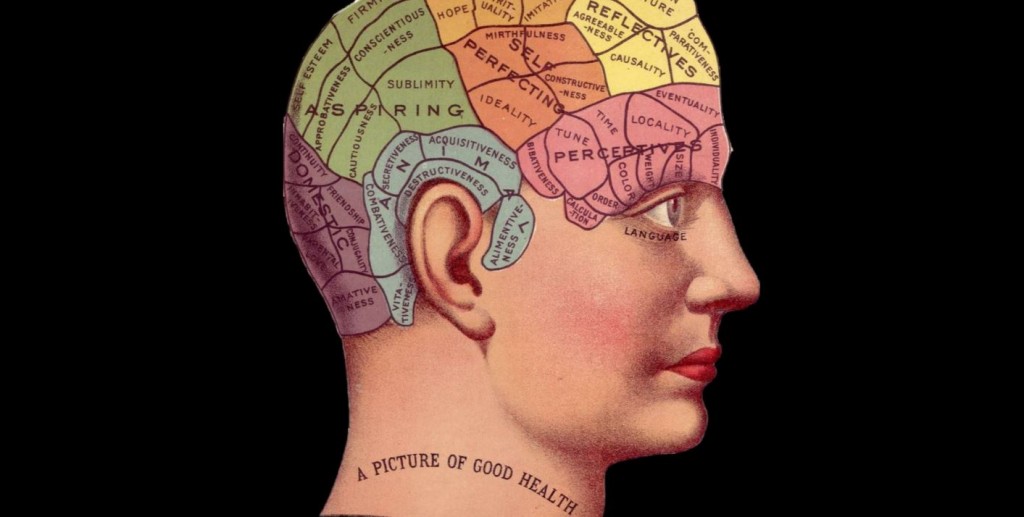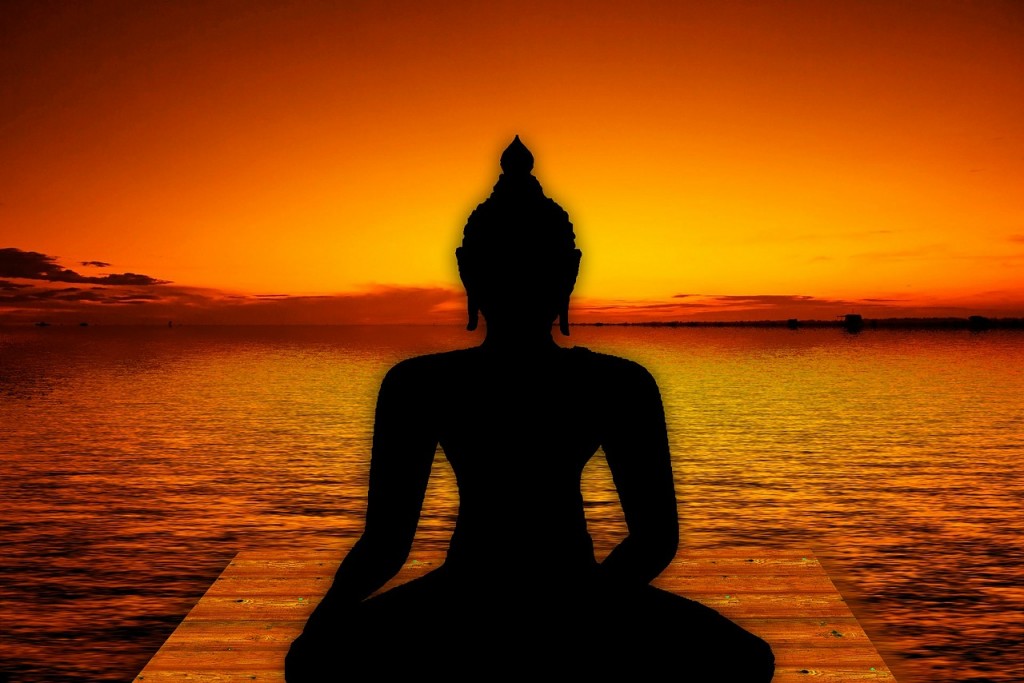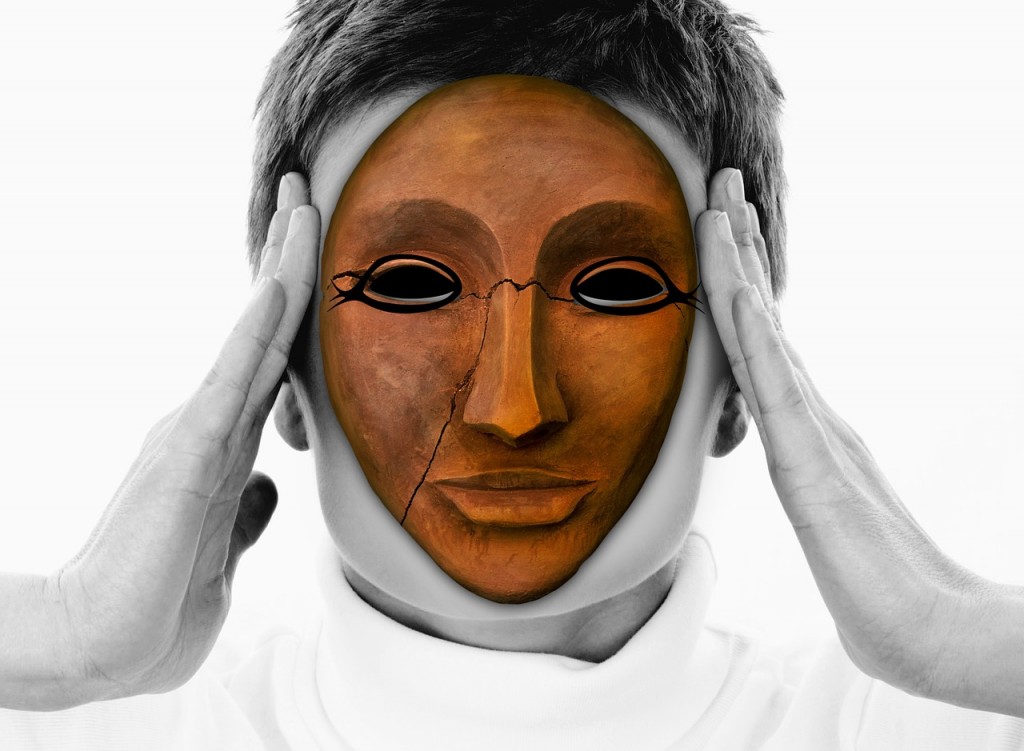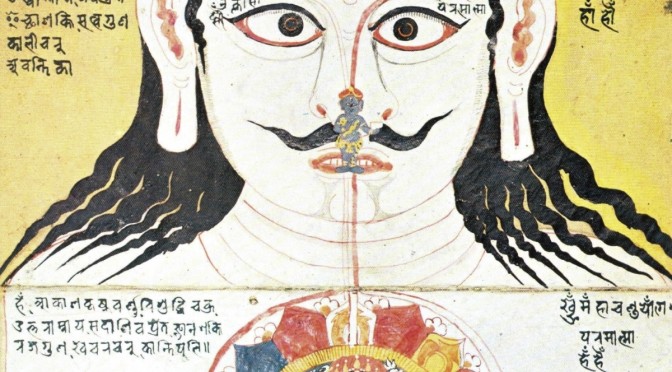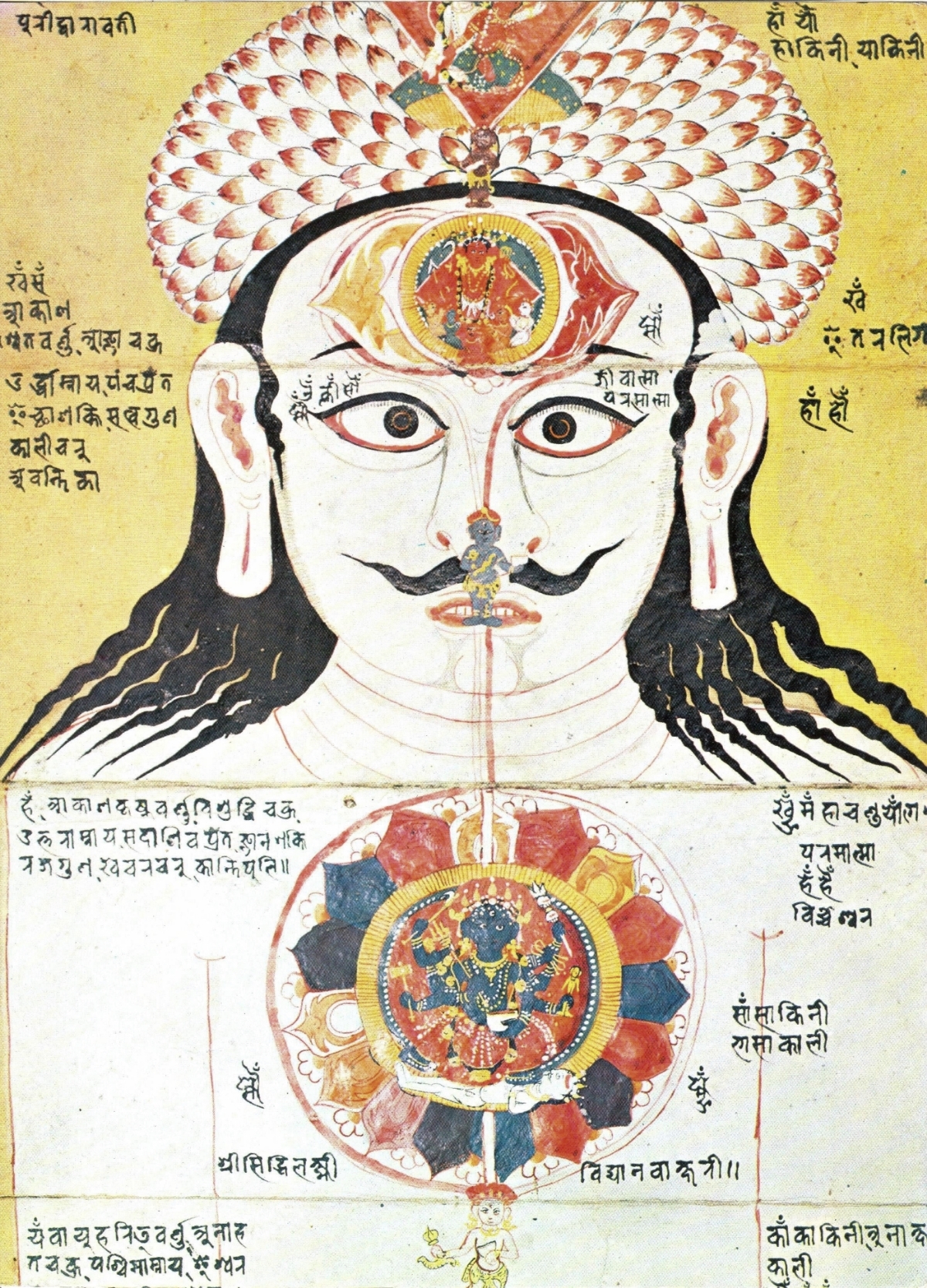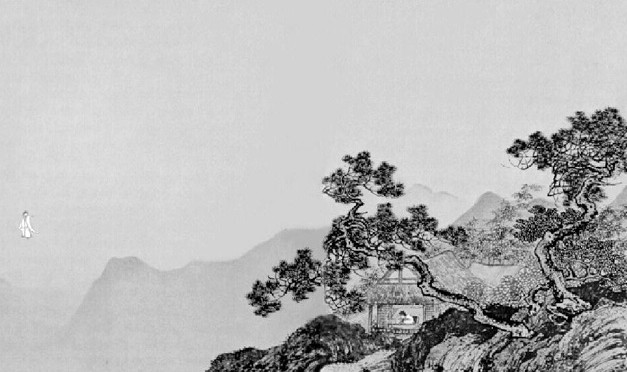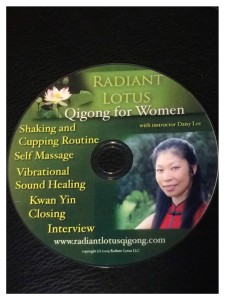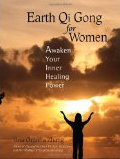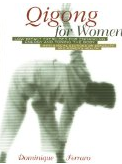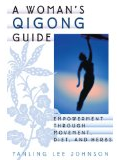By Phillip Behrns
Translated from the French version in Chavannes, Edouard. 1962. Cinq Cents Contes et Apologues: Extraits du Tripitaka Chinois et Traduits en Français. Paris: Libraire d’Amerique et d’Orient, #499.
Sutra pronounced by the Buddha about the Avadana on Daughter of Mango Tree (Amrapali) and Kiyu (Jivaka).
Here is what I heard: one day, the Buddha was in the Kingdom of Loyueche (Rajagrha) and was explaining the law in the middle of the meeting of twelve hundred and fifty disciples, bodhisattvas, mahasattvas, devas, nagas and the eight categories of the great Assembly. Among the people of this time, many were donors, yet, one of them, who was a poor man, only had a handkerchief in rags. He wished to give it as a gift, but remained undecided because he was scared of causing disgust. Then, in the audience, a bhiksuni named Daughter of Mango Tree stood up, arranged her cloth, paid tribute, kneeled on both her knees, joined her hands, and said to the Buddha: “O honoured of the world, I can remember that in a previous life, I was born in the kingdom of Polonai (Varanasi) as a poor girl. At the time there was a Buddha named Kia Ye (Kacyapa), who was explaining the law in the middle of a large assembly. I sat down to hear about the holy books and I was happy; I gave the intention to make a donation, but considering I did not have anything and thinking about my poverty, I became sad; then I went to someone else’s garden and begged for fruit; I was given a mango, it was big and its fragrance excellent; I held a bowl of water in my hand at the same time as this unique mango and gave it as a gift to Buddha Kia Ye ( Kacyapa) and the assembly. The Buddha knew the excellence of my intention, he accepted my gift and made a wish, then he shared and gave out the water and the mango, making sure everybody received some. Thanks to this good fortune, when my life ended, I was born a devi and I became a devi queen; then, when I was born down here, in this world, I did not come from a foetus, but was born in a mango flower for ninety one kalpas; I was fresh and beautiful and always knew my previous lives. Now I met the Honoured of the world who opened for me the eye of wisdom. Daughter of Mango Tree recited those stanzas:
The loving beneficence of the Three Venerable is universal, – its intelligence saves men and women without distinction; – the great reward I received for giving a little bit of water and fruit was that I could be freed from all sorrow.
In this world, I was born in a flower; – above I was queen of the Devis; – since I found shelter in the Blessed Saint (Bhagavat); – my field of happiness is deep and fertile.
After she finished paying tribute, the Bhiksuni, Daughter of Mango Tree went back to her seat.
When the Buddha was in this world, in a royal garden of King Weiyeli (Vaicali), a mango tree grew spontaneously; it had numerous branches and leaves, its fruit were a lot bigger than those of other trees, they were shiny , and smelled and tasted wonderful. The king liked this tree a lot and no one was allowed to eat the fruits, except the most honoured women of the harem. Yet in this kingdom, there was a Brahman grhapati whose riches were uncountable and no one in the kingdom could be is equal; moreover, he was intelligent, discerning and more talented and wise than the crowd of the men; the King liked him very much and had made him one of his ministers. One day, the King invited this Brahman for diner, when the meal was finished he gave him a fruit from the mango tree; realising that this mango had a particular fragrance and taste, the Brahman asked the king, if there was, under this mango tree, any small offshoot he could ask to be given as a gift. The king answered: “there was a large number of those offshoots, however, because I was afraid they could be detrimental to the big tree, I removed them one after the other; I will give you one if it is your wish.”
So was done, and the Brahman brought this offshoot home and planted it; he was watering it morning and night. The tree was growing day after day, its branches were plentiful and strong; after three years, it grew fruits that were worth the king’s mango tree’s for their beauty and their size. The Brahman thought happily : “ My riches are uncountable and do not compare unfavourably to the King’s; I was only his inferior because I did not have this mango tree, but now that I have it, I am just as good as the King. “ He took one of the fruits and tasted it, but it was very acrid and he could not eat it. The Brahman became very sad; having withdrawn himself, he thought that the reason for that should be that the soil had not been fertilized well enough. So he took the milk of a hundred cows and gave it to drink to one cow, then he collected the milk of that cow and cooked it to make a kind of butter, which he sprinkled on the roots of the mango tree. He did that daily, and the next year the fruits were sweet and delicious, just like the King’s mangos.
However, on the side of the tree, grew an excrescence, which was growing more and more. The Brahman thought the sudden apparition of this excrescence could be detrimental to the fruits, but when he wanted to cut it off, I got afraid to hurt the tree. He meditated for several days perplexed and undecided, until suddenly, from the middle of the excrescence, a branch grew, straight to the sky, strong, straight, flexible and beautiful, it outgrew the top of the tree. When it was seventy feet high, the top divided into several branches, which spread on the sides in a circle to form something like and upside down canopy. The flowers and leaves it was covered with won out over the main tree’s ones. The Brahman was amazed and, because he could not figure out what was at the top, he built a wooden scaffolding and climbed to have a look; he saw that at the top of the branch and at the centre of the upside down canopy, there was a pond of fresh and fragrant water, also there were many flowers with fresh and bright colours, he looked under one of the flowers and found a little girl who was in one of them, the Brahman took her in his arms and brought her home, he fed and raised her. Her name was Daughter of Mango Tree.
When this child reached her fifteenth year, she was so beautiful that nobody in the world could compare, her reputation spread to far away kingdoms. Seven kings arrived at the same time and went to the Brahman to ask to become engaged to Daughter of Mango Tree and make her their wife. The Brahman was very scared, and did not know to which one he should give her; he built a high tower in the middle of a garden and put Daughter of Mango Tree at the top, then he went out and told the kings: “This girl was not conceived by me, she was created spontaneously at the top of a mango tree, I really don’t know if she is the daughter of a deva, a naga, a demon or a djinn. Now, here you are, seven kings coming to ask for this strange person, if I give her to one of you, the six other kings will be annoyed. However I am not going to refuse her to you. .Now, this young lady is in a tower in the garden. Discuss and when you have decided which one of you should have her, this one may just take her. I am not going to decide”.
Then the seven kings started to discuss the matter between them and the night came before the debate was finished; then, one of them, who was king Ping-cha (Bimbisara) entered the tower, found the girl and slept with her. The next day, when he was about to leave, Daughter of Mango Tree told him: “ Dear King, you bothered to lower your highness to come to me, but now, you want to leave, if I have a child, they will have royal blood, who should I entrust with them?” The King answered: “If it is a son, you will give him to me, if it is a girl, I give her to you. “ Then the King took a golden ring with a seal of his finger and gave it to Daughter of Mango Tree to use as an attestation. Then the King went out and told his ministers: “I managed to take Daughter of Mango Tree and I spent the night with her, she has nothing extraordinary and she is just like any woman, thus I am not going to marry her.” All the soldiers of King Ping Cha (Bimbisara) cheered and said:” our King was able to take Daughter of Mango Tree.” Hearing this, the six other kings left.
After King Ping Cha (Bimbisara) left, Daughter of Mango tree became pregnant; then she ordered the doorman to say she was sick if someone asked to see her. When the term came, she gave birth to a boy with a fine face, who was holding a bag of acupuncture needles in his hand. The Brahman declared:” This child is the son of a king, and he is holding a medical instrument; he will certainly be a king doctor.” Then Daughter of Mango Tree wrapped the child in a white cloth and ordered a maid to go and leave him in the street. As per this order, the maid took the baby and abandoned him. At this time Prince Wou Wei was in his chariot, planning to visit the great King and had sent people to clear the road. But the prince noticed from afar a white item on the path , he made the chariot stop and asked his escort:” What is this white object?” He was answered that it was a little boy. “Is he dead or alive? “ He asked. “Alive”, he was replied. The prince ordered his people to take him, and then looked for a wet nurse to feed him; because he was alive, a Brahman took the little boy and gave him back to Daughter of Mango Tree. He was named Ki Yu (Jivaka).
When he reached the age of eight, because of his intelligence, his strong talents and his knowledge of all sorts of books, he was very different from the average children. When he was playing with the neighbourhood boys, he was despising them because he thought they were not his equal. One day, those little boys insulted him together and told him: “Fatherless son, born to a depraved girl, how dare you despise us?” Taken aback, Ki Yu (Jivaka) remained silent and did not answer. He went to his mother and asked her:” I can see that the other little boys are not my equal , however they are insulting me by calling me fatherless son. Where is my father now?”His mother answered:” your father is none other than King Ping Cha (Bimbisara)
– King Ping Cha (Bimbisara), said Ki Yu (Jivaka), can be found in the kingdom of Loyueche (Rajagrha), which is five hundred lis away. How did he conceive me? And if you are telling the truth, O mother, how will I prove it?” His mother showed him the ring with a seal and told him:” This is your father’s ring. Ki Yu (Jivaka) examined the ring and saw that it had the following inscription “Seal of King Ping Cha”. He took the ring and went to the kingdom of Loyueche (Rajagrha) and went straight through the palace door, there was no one at the door to tell him off. I reached to the king, paid tribute, kneeled and said:” O King, I am your son; I was born to Daughter of Mango Tree. Now that I have reached my eighth year, I learned that I am your offspring and this is why I am bringing you proof in the form of the seal ring, and I am coming from far away to become part of your family.” The King saw the inscription on the seal, he remembered the promise he made in the past and admitted he was really his son. Filled with compassion for him, he named him crown prince.
Two years later, he who was to become King A Cho Che (Ajatacatru) was born; Ki yu (Jivaka) said to the King: “When I was born, I was holding a bag of acupuncture needles, it was a sign that I had to become a doctor, even though you named me crown prince, I am not happy. Because you had a son with your first wife, he should succeed to you in your function. As for me, I wish to practice the art of medicine.” The King consented, and told him:” Because you are not the crown prince anymore, you cannot enjoy free emoluments from the King anymore. You need to study the medical science.” The King ordered all the best doctors of his kingdom to teach him all the recipes of their art, but Ki Yu (jivaka) was only playing and did not receive their teachings, all his masters told him:”The art of medicine is not very high: to tell the truth it is not a subject for the honourable prince heir. However, we cannot go against the great king’s injunction, we received orders several months ago, and, O Prince, you didn’t even memorise half a sentence of our formulas. If the King asks, what would we answer?” Ki Yu (Jivaka) told them:”When I was born, I was holding a sign that I would be a doctor, this is why I told the great King: “I renounce the glorious titles and I am asking to study the art of medicine” How can I be so neglectful as to make you reprimand me? My behaviour can be explained by the fact that your science is inadequate to instruct me”. Then he took all the books about plants, medical recipes, acupuncture and pulse, and asked embarrassing questions to his masters, who did not know how to answer. All of them bended in front of Ki Yu (Jivaka ) and paid tribute to him. Kneeling and with joined hands, they told him:”This day we have to admit, O prince, that we cannot reach your divine holiness. All the questions you asked have been subject to controversy for our masters for generations, and we cannot understand them. We are wishing, O Prince, that you explained them to use completely, and that you solved the mysteries that have been tormenting us since we were born.” Then Ki Yu (Jivaka) explained the solution to those problems to them, all the doctors got up full of joy and paid tribute to him by bowing down, saying that they were receiving his teaching with gratitude.
Ki Yu (Jivaka) had the following thought:” Among all the doctors the King gave orders to; none was able to teach me. Who will teach me medicine?” Meanwhile, he found out that, in the kingdom of Tochachelo (Taksacila), there was a doctor named Atili (Atri) nicknamed Pinkialo (Pingala), who had great knowledge about medicine, he could certainly teach him. And so, young Ki Yu (Jivaka) went to this kingdom and upon arriving to Pinkialo (Pingala) he told him:” Great Master, I am asking you to agree to teach me.” After studying under his direction for seven years, he thought: “Now I am trained in the art of medicine, when will I finish?” Therefore he went to his master and told him:” Now I am trained in the art of medicine, when will I finish?”His master gave him a basket and tools needed to collect plants, and told him:”On the length of one yojana, in the kingdom of Tochachelo (Taksacila), look for all the plants and bring me those that do not have a medicinal use. ” Following his master’s orders, Ki Yu (Jivaka) looked for all the plants without a medicinal use in the kingdom of Tochachelo (Taksacila), but in the end he could not find any. As a matter of fact, he could identify all the plants and all the trees he could see, and he knew when they could be used, and all of them could be used in medicine. He came back empty handed and told his master those words:”o Master, now you need to know this: In the kingdom of Tochachelo (Taksacila), I searched for plants that did not have any medicinal use on a surface of one yojana, but I could not find any such plant. For all the plants and tress I saw I could perfectly identify their use”. The master answered to Ki Yu (Jivaka):” You can go now; you know the science of medicine to perfection. I am the first for this art in the Jambudvipa, but after I die, you can succeed to me. “
Then Ki Yu (Jivaka) left and started healing illnesses; all of those he was treating healed at once. His reputation was known all across the kingdom.
Later, Ki Yu (Jivaka) wanted to enter the royal palace. In front of the door, he met a little boy who was carrying a bunch of fire wood. As soon as he saw him from afar, Ki Yu could see this child’s five viscera, including his gut and stomach, and was able to distinguish them neatly. Ki Yu (Jivaka) had the following thought:” In the book of plants, it is told about the king doctor tree (bhaisajyarajà) which illuminates the inside from the outside and allows seeing the viscera inside a person’s stomach. Could it be that there is a piece of king doctor tree in the wood this child is carrying?” He went to the child and asked him what price he wanted for his wood. The child having answered that he wanted ten coins, he paid this price to acquire the wood. The child put the wood down and we could not see the inside of his stomach anymore. Ki Yu (Jivaka) realised that he did not know where in the faggots was the king doctor wood. He untied two faggots and took the sticks one by one and brought them close to the child’s stomach. As he could not see anything appear, he kept trying with all the sticks. The last twig was slightly longer than a foot, he tried to use it to make some light and he saw everything in the stomach. Ki Yu (Jivaka) was very happy, because he knew that this twig was certainly the king doctor wood. Then he gave the child his wood fire back, which as he had received money and had kept his wood left very happy.
However, Ki Yu (Jivaka) was having the following thoughts:” Who am I going to heal now? This kingdom is small and it is on the border. The best would be that I went back to my country of origin to start practicing medicine.” And so he went back to the kingdom of Pokiato (Saketa). In the city of Pokiato, there was an important public figure, whose wife had been constantly suffering from migraines for twelve years; all the doctors had been treating her without being able to heal her. Ki Yu (Jivaka) heard about her and went to her home, he said to the door man:” Tell your master that a doctor is at the door”. The doorman went in and passed the message. When the public figure’s wife asked what did the doctor looked like, he answered that he was a young man. She thought that if old, experienced doctors couldn’t heal her, a young one would be even more incapable. She ordered the doorman to tell that she did not need a doctor now. He went out and told Ki Yu (Jivaka):”I gave your message to my master, but his wife answered that she did not need a doctor.” Ki Yu (Jivaka) insisted:”Go tell your Master’s wife that she only allowed me to treat her, if she is healed, she can give me what she wants.” When the doorman had reported those words, the lady thought that she did not risk anything and ordered the doorman to let him in. When Ki Yu (Jivaka) was with the public figure’s wife, he asked her about her sufferings, she answered that she was suffering in such and such way. “How did your illness start?
– It started in such and such circumstances
– Is your illness old or new?
– It started in such time.”
After all these questions, Ki Yu (Jivaka) declared:”I can heal you.” Then he took a good remedy and fried it in butter, then, he poured it in the woman’s nose. The butter came out from the patient’s mouth mixed with saliva. She collected it all in a vase and kept the butter after separating it from the saliva, which she discarded. When he saw her behaving like this, Ki Yu (Jivaka) felt sad because he was thinking:”If she is this thrifty for a little bit of soiled butter, what will she do when time comes to reward me?” The patient noticed his preoccupations and asked him:” Are you afflicted? “After his positive answer, she asked him about the reason of his affliction. “I was thinking, he told, that if you are this thrifty when it comes to a little bit of soiled butter, it would be even worse when time comes to reward me, this is why I am becoming sad.” The woman answered:” Keeping a household is not easy. What was the point of throwing this butter that could still be used to light a lamp? That is why I collected it. As for you, focus on healing my illness, no need to be afflicted.” He treated her and she was healed. Then the wife of a public figure gave him four hundred thousand ounces of gold as well as slaves and maids, and chariots with horses.
After Ki Yu (Jivaka) received all these riches, he went back to the royal city (Rajagrha) and went to Prince Wou Wei’s (Abhaya) residence. He told the doorman:”Tell the Prince that Ki Yu (Jivaka) is outside.” The doorman passed the message and the prince ordered to invite Ki Yu (Jivaka ) in at once. When he was inside, he bowed with his head on the floor, and after paying tribute he sat on the side. He gave the prince a detail tale of what had happened to him and declared that he wanted to give all the riches he had acquired to the prince.The prince convinced him not to by telling him he should not give him such a gift and by encouraging him to use this fortune on himself.
This is how Ki Yu’s (Jivaka) first recovery happened.
At the time, in the kingdom of Kiuchanmi (Kaucambi) there was the son of a notable whose intestine got tied together in his tummy when he was playing on a wheel, what he was eating and drinking could not be digested of eliminated anymore. No one in this kingdom could cure him. Locals heard that there was a great doctor who was excellent at healing patients in the kingdom of Mokie (Magadha), and sent a message to the King:” The son of a notable of the Kingdom of Kiuchanmi (Kaucambi) is ill, Ki Yu (Jivaka) can cure him, we are asking, O King, that you sent him to us.”Then King Ping Cha (Bimbisara) called Ki Yu (Jivaka) and asked him: “The son of a notable of the kingdom of Kiuchanmi (Kaucambi) is ill, can you cure him?” Because he answered that he could, the king continued:” Because you are able to cure him, I authorise you to go and treat him.” Then Ki Yu (Jivaka) got on a chariot and went to Kiu Chan Mi (Kaucambi). The son of the notable was already dead when he arrived, some musician were escorting his body. When he heard the noise, Ki Yu (Jivaka) asked:” What are this music and those drum sounds for?” Someone next to him answered:” The son of the notable you came for is dead. What you can hear is the music of the musicians escorting him.” Ki Yu (Jivaka) could differentiate all the sounds and said:” Go tell to bring this body back, it is not a corpse.” They came back as soon as the order was given. Ki Yu (Jivaka) came off his chariot, took a very sharp knife and cut open the child’s stomach. He opened where the intestine was tied up and showed the mother, father and all relatives, and told them:” His intestine got tied together like this because of playing on a wheel, therefore food and drinks were not digested anymore, but it does not mean he is dead.” He untied the intestine and put it back to its place, then he stitched the stomach and the flesh went back together, he rubbed it with a balm. The wound healed instantly and hair grew back, so much so that the scare looked like there had never been a wound. After that, the son of the notable rewarded Ki Yu (jivaka) by giving him four hundred thousand ounces of gold. His wife also gave him four hundred thousand ounces of gold, and so did the notable and his wife.
Ki Yu (Jivaka) was thinking:” I must acknowledge the role of my master. I am going to take those sixty hundred thousand ounces of gold and give them to the great master in the kingdom of To Cha Che Lo (Taksacila), Pinkialo (Pingala).” After reflecting, he took his gold and went to see his master. He honoured him by putting his face on his feet and offered the gold with the following words:” I wish, master, that you would accept this.” His master told him:”You better make an offering, I do not need this money.” As Ki Yu (Jivaka) insisted, Pinkialo( Pingala) accepted the gold. Ki Yu ( Jivaka) said good bye and left after honouring his feet.
At the time, in the kingdom, lived the fifteen year old daughter of a kialoyue grhapati), on her wedding day, she suddenly had a very acute headache and died. Ki Yu (Jivaka) was informed and went to her home, he asked her father:”What common illness caused this young girl to die early?” The father answered:” Ever since she was a child, my daughter was experiencing headaches which grew stronger by the day, this morning the pain was so intense that she died.” Ki Yu (Jivaka) entered the room and with the help of the king doctor (wood), he lit the inside of the girl’s head and saw worms, which were multiplying. There were several hundreds of them. The worms were devouring her brain, and because they had eaten all of it, she had died. Then Ki Yu (Jivaka) cut her head open with a golden knife, took all the worms out and locked them in a jar. Then he rubbed the wound with three kinds of supernatural oils. The first one fixed the damage caused in her bones by the worm bites, the second one regenerated the brain, and the third one healed the wound caused by the knife. Then Ki Yu (Jivaka) told the girl’s father:” Let her rest peacefully and make sure that she does not get scared. She should be completely healed and back to normal within ten days. I will come again when this time has passed.” After Ki Yu (Jivaka) left, the girl’s mother started crying and screaming:” My child died a second time, did anyone ever survive after having their skull cut open? How could the father let this man take our child?” The father stopped her and said:” When Ki Yu (Jivaka) was born, he was holding in his hand a bag of acupuncture needles; later he gave up some high function to practice medicine, and he did this for the greater good of all living things. He is a king doctor appointed by the sky, how could he do something unreasonable? He recommended that you did not scare the patient, but now, on the contrary, you are crying and screaming and risk to upset and scare her, because of you, our child will not be able to live.” Upon these words, the mother stopped complaining and both parents took care of their daughter. She remained still for seven days. On the seventh day, at dawn, she sighed and woke up as if she had been sleeping. She said:” I cannot feel any headache anymore, and all my body is at ease. Who healed me?” Her father told her:” You were already dead when the king doctor Ki Yu (Jivaka) came to give you a cure, he opened your head and took all the worms out, this is how you could revive.” He opened the jar and showed her the worms. When she saw them, the girl was horrified and grateful for her good fortune. She said:” Great is Ki Yu’s (Jivaka) divine power! I cannot wait to acknowledge his good deed.” Her father said:” Ki Yu (Jivaka) promised he would come today.” Moments later, Ki Yu (Jivaka) arrived. She honoured him by putting her face on his feet, she kneeled and joined hands and said: “ O Ki Yu (Jivaka) I wish to become your maid, and serve you until death to acknowledge the good deed you performed by bringing me back to life.” Ki Yu (Jivaka) answered:” I am a master doctor, and I go everywhere to cure people. I do not have a home. How would I use a maid? If you really want to reward me for the service I paid you, give me five hundred ounces of gold, not that I would use this gold, but this is the reason I am asking you this: anybody who has studied has to thank their master, even if my master did not teach me what I know, I am still his pupil, and after I have received your gold, I will give it to him.” The girl took five hundred ounces of gold and gave them to Ki Yu (Jivaka) who accepted them and gave them to his master.
After that, Ki Yu (Jivaka) informed the king of his intention to go visit his mother for some time. So he arrived into the kingdom of Weiyeli (Vaicali). There was in this kingdom the son of a kialoyue (Vaicali) who liked to practice martial arts. He had made an over seven feet tall wooden horse and was training to jump on its back, he could jump on it from the beginning and with time he was becoming more and more skilled. But all of a sudden, one day, I went over his target, lost his balance, fell on the ground and died. Ki Yu (Jivaka) was informed, he went to him straight away and used the king doctor wood to light the inside of his stomach, he observed that his liver had turned upside down. The chi was blocked and could not go through; this was what had caused his death. Ki Yu (Jivaka) cut his stomach open with a golden knife, and dipping his hand inside to explore and put things in order, he turned the liver around. Then he rub the patient with three kinds of divine balms, the first one repaired the spots his hand had felt, the second one let the chi and breath flow again, the third healed the wound caused by the knife. After he finished, he told the father:” Make sure to not scare him. He should be healed in three days.” His father followed the instructions, let the patient rest, took care of him and looked after him. When the third day came, the boy sighed and woke up, he looked like he had just woken up from a sleep, and he could get up straight away. Not long after that, Ki Yu (Jivaka) came back, the boy met him happily, he paid tribute to him, putting his face on his feet, went on his knees and said:” O Ki Yu (Jivaka) I wish to become your slave and serve until death to thank you for the good deed you made by bringing me back to life.” Ki Yu (Jivaka) replied:” I am a master doctor, the families of my patients are fighting to serve me. How would I use a slave? My mother worked very hard to raise me, and I did not have a chance to thank her for her kindness she showed taking care of me. Therefore, if you want to thank me for my services, give me five hundred ounces of gold that I would use to reward my mother for her kindness. So he took this gold and gave to his mother, Daughter of Mango Tree, and went back to the kingdom of Loyueche (Rajagrha).
After Ki Yu (Jivaka) had healed these four people, he became famous all across the Empire, and no one ignored him. In the south, there was a big kingdom, which was 8,000 lis away from Loyueche (Rajagrha), King Pin Cha and all the other little kings were his vassals. The king of this kingdom had been sick for several years . He was suffering from rage attacks. He looked at men with disdain and made them perish. When someone raised their eyes to see him, he was killing them, when someone was bowing their head and did not raise it again; he was killing them as well. Men who walked too slowly, he was killing them, those who walked to fast, he was killing them too, people who were serving by his side did not know what to do with their hands and feet. When a master doctor was preparing a remedy for him, the king was scared that he would put poison in it and kill him. He had killed countless people for various reasons, ministers, women from the harem and doctors. However, his illness was getting worse day after day, the poison was attacking his heart, he was suffocating and had a short breath, and he was feeling like his body was burning. He heard about Ki Yu (Jivaka) and wrote a letter to king Pingcha (Bimbisara) to notify that he was requesting for Ki Yu (Jivaka) to come to him. Ki Yu (Jivaka), who had heard that this king had killed numerous doctors, was very scared, as for king Pingcha (Bimbisara) he was feeling for Ki Yu (Jivaka) and was scared that he would be killed, so he did not want to let him go, but at the same time he was scared of being punished. Father and son were hugging each other in despair and did not know what to do. Eventually, king Pingcha (Bimbisara) took Ki Yu (Jivaka) with him and took him to the Buddha, he honoured him by putting his face on his feet, and said to the Buddha:” O Honoured of the World, this king has got a bad temper and I am afraid he might have the king doctor die, should he go to him?” The Buddha answered to Ki Yu (Jivaka):” In a previous life, you and I made a pact to work together to save the all universe: I would heal the illnesses of the soul, and you would heal the diseases of the body. I became Buddha, this is why, as per our wish, you should gather all beings before me (so I can heal them). The king is critically ill and he asked you from afar, why wouldn’t you go? Go rescue him quickly, make up a good remedy to cure his disease. This king is not going to kill you.”
After receiving the Buddha’s blessing, Ki Yu (Jivaka), went to the king, he took his pulse and lit his body thanks to the king doctor (wood), and noticed that the blood and the chi in his five viscera and his one hundred blood vessels were mixed-up, it was caused by the venom of a snake in his body. Ki Yu (Jivaka) said to the king:” I can cure your illness, and when I am finished, I can guaranty that you will be healed. However, I need to go in and see the queen-mother in order to discuss the composition of the remedy with her. If I cannot see the queen-mother, the remedy cannot be prepared properly.” Hearing these words, the king could not understand the reason and wanted to lose his temper, however, because he was ill and knew Ki Yu’s (Jivaka) reputation and he had mandated him to come in hope to get some help; he also considered that Ki Yu (Jivaka) was a young child and should not have ill intentions, he accepted his conditions. He mandated an eunuch to introduce him to the queen-mother.
Ki Yu (Jivaka) told the queen-mother:” The King’s disease can be cured, but now the remedy must be prepared, and because the recipe must remain a secret, it is important to exclude assistants. The queen-mother sent the eunuchs away. Then Ki Yu told to the queen-mother:” When I examined the king, I realised that the chi in his body has been poisoned by a snake, it seems like there is something not human. Whose son is the king? Queen-mother, please tell me the truth, and I will be able to heal him, if you don’t tell me, the king will never recover.” The queen-mother told him:”A long time ago, I was in the room with the golden columns. I went to sleep during the day. Suddenly some being came on me. I was kind of confused, in a state between dream and reality, it seemed like I have had a nightmare. I had sex with this being, and suddenly I saw a big snake, it was over thirty feet long and was going away from me. Then I realised that I was pregnant, the king is probably the son of this snake. I was ashamed of this adventure; this is why I did not say a word. But now, young man, you understood what happened. Your science is wonderful! [If the king can be healed, I wish to entrust you with the king’s life], what remedy should be used?” Ki Yu (Jivaka) answered:” I need melted butter.
– Alas young man; cried the queen-mother; refrain from speaking about melted butter, because the king hates the smell of it, and also hates hearing the word pronounced. You can count by the hundreds, even the thousands the men who died for speaking about melted butter. If you talk about it now, you will probably be killed. If you gave it to the king to drink, you will never get it to go down his throat. I wish that you used some other remedy.” Ki Yu (Jivaka) answered:” Melted butter fights the poison, therefore, people who are ill because of poison will hate smelling melted butter. If the king’s illness was not serious and caused by some other poison, I would have been able to cure him with some other remedies, but because the venom of the snake is violent and has affected all of his body, we can only destroy it with melted butter. Now we need to transform the melted butter and purify it to make it a taste less liquid. The king will drink it naturally, without suspecting anything, the remedy will go down his throat, and he will be healed, don’t worry.”
Ki Yu (Jivaka), went out to see the king, he told him:” I just had an interview with the queen-mother, I gave her the recipe of the remedy, she is going to prepare it, it will be ready in two weeks, but I have five requests. If you agree on what I am about to ask you, your illness will be cured, but if you refuse, it will be incurable.” After the king had asked him about his requests, Ki yu (Jivaka) said:” First, I want you to get from your army stock, some cloth that you have not worn yet, secondly, I wish to be allowed to come and go as I wish without being controlled. Third, I request to be allowed to see the queen-mother and the queen alone every day, fourth, I want that, when you drink the remedy, you drank all of it without stopping half way, fifth, I would like the royal white elephant that can go eight thousand li.”
Hearing those words, the king lost his temper and said:” Child, how dare you make those requests? I demand that you gave a good reason for each of them, if you fail, you will be beaten to death. How dare you ask for my new cloth? You probably want to kill me, wear my cloth and pretend to be me!” Ki Yu (Jivaka) answered:” It is necessary to be clean and pure to make the remedy, however, my cloth is soiled, this is why I would like to wear a king’s outfit when I prepare the remedy.” The king understood and said:” Very well, but why would you want to come and go as you please without control? Won’t you take advantage and bring some soldiers who will attack and kill me? Ki Yu (Jivaka) answered: “ Many time before, you have employed master-doctors, but you were suspicious of all of them and did not trust them, then you killed them and you did not take their remedies, so much so that, when I arrived, all the ministers were saying that you would make me die as well. However, because your illness is very serious, I am afraid that some people outside would make trouble, but if I can come and go as I please without control, people outside will know that your highness is trusting me, and thus will take my remedy and heal. They will not dare thinking about revolution.” The King said:” Very well. But why do you want to see my mother and my wife alone every day? Is it that you want to corrupt them?” Ki Yu (Jivaka) answered:” O King, you have killed so many people on many occasions, thus, your subject, big or small, are all scared and they do not wish for the recovery of the king. Therefore, there is no one I could trust. If I teamed with one of them to prepare the remedy, they would take advantage of a second of inattention to throw in some poison without me noticing. It would be serious. This is why, when I was thinking about who I could trust, I could only think of your mother and your wife. I need to be introduced to the queen-mother and the queen to prepare the remedy with them, it will be ready after cooking for fifteen days, I want to get in to check that the fire is well balanced every day.”Very well, but why do you want me to drink all the remedy in one go? Isn’t it that you want to put some poison and you fear that I would notice?” Ki Yu (Jivaka) answered:” The dosage of each ingredient in the remedy follows strict proportions, the vapours and taste must work simultaneously, if you stop half way, there will be no more links between the elements of the remedy.” The king said:”Very well, but why do you want my elephant? This elephant is the gem of my kingdom, it can walk eight thousand lis per day, I won power over the other kingdoms thanks to him. Don’t you want to steal it to bring it home and then attack my kingdom with your father?” Ki Yu (Jivaka) answered:” On the southern border of your country, in the mountains, there is a wonderful medicinal herb growing four thousand lis from here, it is necessary that you ate this herb after drinking the remedy. I want the elephant to gather this herb leaving. I want to leave in the morning and come back in the evening to make sure you can still feel the taste of the remedy.” After receiving answers, the king gave him everything he had asked for.
Ki Yu (Jivaka) started to purify the butter by cooking it, after fifteen days, he has made it look like fresh water, he obtained five tenth bushels. Then he went out with the queen-mother and the queen, he was holding the medicine. He announced to the king that he could drink and expressed the desire that the white elephant was prepared and kept in front of the palace, the king agreed. When the king saw that the medicine looked like fresh water and was odourless and tasteless, he did not know that it was melted butter, moreover, because the queen-mother and the queen had witnessed the preparation, he was convinced that it wasn’t poison, and so he drank everything in one go as previously agreed. Ki Yu (Jivaka) and went straight back to the kingdom of Loyueche (Rajagrha), however, after travelling for three thousand lis, because he was young and not very resistant, he could not bear the speed of the race, he got dizzy and was very tired, then he stopped and went to sleep.
After midday, the king did a burp and smelt the melted butter; he lost his temper and screamed:” This little boy dared to make me have melted butter, I was wondering why was asking for my white, but it was because he wanted to run away from me.” The king had a minister named Crow (Kaka) who was a brave man, his supernatural power allowed him to catch up with the elephant by foot. The king called Crow and told him:” Chase this boy and bring him to me alive, I want him beaten to death in my presence. However, you are always lacking frugality and you are eating and drinking eagerly, that’s why you were named Crow. People like this master doctor often like to serve poison, so, if this boy offers you food, do not eat it.”
Crow received the instructions and went. He reached Ki Yu (Jivaka) in the mountain and told him:” Why did you make the king eat melted butter and pretended it to be a remedy? This is the reason why the king ordered me to chase you and ask you to come back, come back with me quickly, if you apologize and admit your fault, you might have a chance to remain alive, but if you try to escape, I will kill you straight away, and you cannot escape.” Ki Yu (Jivaka) thought:” Despite finding a way to get this elephant, I cannot escape with it anymore; I need to come up with a new stratagem. How can I follow this man?” He said to Crow:” I have not eaten anything since this morning, if I take the road to go back, I will certainly die, it would be good if you gave me some time to find some fruit to eat and water to drink in the mountain. When I will be full, I’ll go to death!” Because he could see that Ki Yu (Jivaka) was a young boy, scared by the idea of death and who was expressing himself with difficulty, Crow felt sorry for him and gave him what he was asking for, saying:” Eat quickly and we are going to go, we cannot stay here for a long time.” Then, Ki Yu (Jivake) took a pear and ate half of it, but he poured some of the poison he had under his nail on the other half and put the pear down on the ground. He also took a cup of water, and after drinking half of it, he put the rest of the poison in what was left, and put the cup back on the ground. Then he said with a sigh:” This pear and this water are divine remedies, their fragrance is pure and they are delicious, eating and drinking them is making your body healthy, all the diseases heal, and at the same time, your breath and strength are doubled. It is a pity that we can’t find them at the kingdom’s capital so that all the inhabitants can enjoy them, it is unfortunate that they remain unknown from the mountain men.” After he had finished talking, he left to the mountain to look for more fruit. Crow was a glutton, and he had heard Ki Yu (Jivaka) praise those divine remedies, and finally, he had seen Ki Yu (Jivaka) himself drink and eat, so much so that he was thinking that these foods were certainly not poisoned, he took what was left of the pear and ate it, he also finished the water. He immediately started to suffer from diarrhoea, which made his stool look like water. He fell on the ground and laid down. Every time he was getting up, he was feeling dizzy and falling down, he was unable to move.
Ki Yu (Jivaka) told him:” The king took my medicine, and therefore he is likely to be cured, but for now, the remedy has not worked yet, and the venom has not been completely destroyed yet. If I went to him now, he would kill me. You did not know this and wished to seize me to fulfil your mission, this is why I made you ill. But this illness is not serious, refrain from moving, and in three days, you will feel better, but if you get up to go after me, your death will be assured.” He got on the elephant and left. In the first village he crossed, he said to the leader of five men:” There is over there, a messenger of the king who fell suddenly ill, go and get him quickly and bring him to your home, take good care of him, give him a soft bed, give him porridge and make sure he doesn’t die. If he died, the king would destroy your kingdom.” After these words he left and went back to his country. The leader of the five men followed the orders that had been given to him, he brought Crow back and looked after him. After three days, the poison had been completely eliminated, Crow went to see the king, he bowed to the ground in front of him and said:” Truth is I am a fool, I didn’t follow your highness’s recommendations, and I trusted Ki Yu’s (Jivaka) words, I drank and ate what he had left of fruit and water, I have been affected and got diarrhoea for three days. Only now I am feeling better. I know that I deserve death.”
During the three days before Crow returned, the King had healed from his disease, he had pondered his actions and had regretted sending Crow away. When he saw him come back, he was feeling torn between compassion and joy. He told him:” Thanks to you, the young boy wasn’t brought back here when I was irate, and when I would have him most certainly beaten to death. I benefited from his actions and I am back to life. My perversity would have been terrible if I had made him died instead of rewarding him.” Then the king started to feel remorse about all the people he had unfairly killed on many occasions. He gave them honorary funerals, exempted their families from taxes, and gave them money. I wanted to see Ki Yu (Jivaka) again and say thank you for his good deed, and so he sent some messengers to fetch ki Yu (Jivaka), despite knowing that the king was healed, he remained fearful and didn’t want to go back. Ki Yu (Jivaka) went to the Buddha again, he put his head on his feet to show respect, and told him:” O honoured of the world, the king sent some messengers who came to call me, should I go? “ The Buddha answered:” Ki Yu (Jivaka), in a previous life, you promised to perform a praiseworthy action, how could you stop half way? You need to go now, and when you have cured this king’s external disease, I will cure his inside illness.” And then, Ki Yu (Jivaka) followed the messengers.
When the King saw Ki Yu (Jivaka) he was very happy, he made him seat with him, and told him, holding his arm:” Thanks to what you did for me, I was granted a new life, how can I reward you? I want to split my kingdom and give you half. I will give you half of the beautiful women in my harem, half of the precious items in my warehouse and half of my treasures, I want you to accept.” Ki Yu (Jivaka) said:” I used to be a crown prince, even if it was in a small kingdom, the population and riches I would have had were more than enough, but I didn’t enjoy governing a kingdom, and this is why I asked if I could become a doctor. I need to travel to heal my patients, what would I do with land, women and treasures? They wouldn’t be of any use to me. O King, earlier, when you granted me my five wishes, I was able to cure your outside disease, now, if you granted me one more wish, your inside illness could be removed.” The king answered:” I am ready to receive your instructions, please express your wish.”
Ki Yu (Jivaka) said:” I am asking you, O King, to invite the Buddha to come and to receive the wise law from him.” He took the opportunity to sing the praises of the Buddha to the king, and to explain the peculiar elevation of his function. Hearing his words, the king said happily:” I want to send my minister Crow on the white elephant to get the Buddha. Can I make him come this way?” Ki Yu (Jivaka) answered:” No need for the white elephant. The Buddha understands everything, he can read the thought of men from afar. Content yourself with practising abstinence and purification for a while, then prepare some offerings, burn perfumes, and praise looking in the direction of the Buddha, then stand on your knees and express your invitation: the Buddha will come by himself”.
The king followed this advice, and the following day, the Buddha arrived with a procession of one thousand two hundred and fifty bhiksus. After he finished eating, he explained the sacred scriptures to the king: then the mind of the king opened up and he felt the true and real wisdom without equal (anuttara samyak sambodhi). All the inhabitants of the kingdom came to receive the five defences and left after paying tribute.
Here is another story about Daughter of Mango Tree: ever since birth, she has been extraordinary. When she grew up, she proved herself to be intelligent, she had studied with her father and knew the theory of the holy books. She even knew more about the movement of stars than her father, moreover, she was practicing the musical arts and was singing like a deva of Brahma. Five hundred daughters of kialoyue (grhapati) and brahmanes joined her to study and to make her their great master. Daughter of Mango Tree, was always followed by her pupils and was celebrating and spreading the word of the holy books. Sometimes she was going for walks in parks or along lakes to play music. People in the country, who did not understand her behaviour, started gossiping about her; they were saying that she was depraved and her five hundred pupils had been nicknamed “the bunch of depraved”.
When Daughter of Mango tree was born, were born in the same kingdom and at the same time Daughter of Siu Man (sumana) and Daughter of Potan (udambara). Daughter of Siu Man (sumana) was born in a flower of siuman. In this kingdom, there was a kialoyue (grhapati) who was pressing siuman (sumana) flowers to make some perfumed oil, but on the side of the stone used to express the oil, an excrescence appeared suddenly, at first it was as big as a crossbow bullet and it was growing day after day until it reached the size of a fist. Then the stone exploded and in the hole, a conglomerate, which looked like a glow-worm, exited quickly and fell on the ground, after three day, a siuman plant grew, three days later, this plant grew a flower, and when the flower bloomed, there was a little girl in the centre of it. The kialoyue (grhapati) took her in and fed her, she was named Daughter of Siuman, when she grew up she became extremely beautiful, she was also talented and intelligent, only Daughter of Mango Tree could compare.
At the time, there was another Brahman. A blue lotus grew spontaneously in his pool. The flower was especially big and was growing by the day until it was the size of a five bushels jar. When the flower bloomed, a little girl could be seen in the centre. The Brahman took her in and fed her. She was named Daughter of Potan (udambara) when she grew up she became very beautiful, she was talented and intelligent, just like Daughter of Siuman.
Having heard about the beauty of the two young girls, the kings of various kingdoms kept coming and asked them to get married, but the two young girls were answering:” We weren’t born from a foetus, we came out of flowers, we are not like ordinary women, what is the point of following a man of this world to get married?” Then, when they heard about the intelligence of Daughter of Mango Tree and found out that her birth had been similar to their, they both left their father and mother to serve Daughter of Mango Tree and ask her to become her pupils. Because of their understanding of the holy books and their wisdom, they were better than the other five hundred pupils.
At the time, the Buddha came to the kingdom of Weiyeli (Vaicali), Daughter of Mango Tree, followed by her five hundred students, when she met him, she praised him with her face and kneeled. Then she said:” I wish, O Buddha, that you came to my garden to eat tomorrow.” The Buddha agreed in silence. Daughter of Mango Tree went home and prepared the offerings. When the Buddha came into town, the king met him as well and after praising him, he kneeled and said:” I wish that you came to my palace to eat tomorrow.” The Buddha answered:” Daughter of Mango Tree has already invited me, you’re coming after her.” The king said:” I am the king of this country, I came to invite you with all my heart, I was hoping that you’d accept. Daughter of Mango Tree is a depraved girl, every day, with five hundred other depraved girls, her students, she is committing illegal actions. How can you reject me to accept her invitation?”
The Buddha answered:” Daughter of Mango Tree is not depraved. In a previous life, she acquired great honours for making offerings to three hundred thousands bhuddas, back then, she, Daughter of Suiman and Daughter of Potan were sisters. Daughter of Mango Tree was the eldest, Daughter of Suiman was the second, and Daughter of Potan was the youngest. They were born in a powerful and very wealthy family, showing each other good example, the sisters were making offerings to five hundred bhiksunis, everyday they were preparing food and drinks for them, and made cloths for them to wear. They made sure they didn’t lack anything. It lasted until the end of their lives. Those three sisters had made the following vow:” In our future life, we wish to meet the Buddha and be granted to be reborn by spontaneous transformation, without going through the foetus stage and be kept from any impurity.” Now, according to their previous wish, they were born at the time I am on earth. Also, despite making donations to the bhiksuni, because they were from a powerful and wealthy family, their words were sometimes too light, sometimes they were making fun of the bhiksuni, saying:” Dear nuns, you have been looking sad for a long time, you may want to get married, but held back by our donations and our care, you cannot express your passion.” This is why these young ladies are going through this pain, even though they dedicate everyday to the promotion of the holy books, they are subject to the unfair accusation of being depraved. As for the five hundred students, they had teamed up with the girls and helped them to make the offerings, and they had enjoyed it as much, this is why they were born with them, the result of their actions has followed them.
At the time, Ki Yu (Jivaka) was the son of a poor family, when he saw Daughter of Mango Tree make offerings, it brought a lot of admiration and joy in his heart, but because he did not possess anything, he started sweeping for the bhiksunis. Every time he was making the place clean and tidy he was making this vow:”If only I could sweep this easily all the diseases and impurity that are in people’s bodies in this world.” Daughter of Mango Tree, who was compassionate poverty and approved of his efforts, always called him her son. When a bhiksuni was sick, she would always make Ki Yu (Jivaka) get the doctor and prepare the potion or remedy. She was saying:” If only you could get the reward of this good deed with me in a future life.” When Ki Yu (Jivaka) was getting the doctor, the patient always healed. Then Ki Yu (Jivaka) made a wish:” I wish to be in a future life, a great king doctor, and always cure the illnesses of the four elements of the body of every human being and heal all of those I will go to.” Thanks to his past actions, he has now become the son of Daughter of Mango Tree and everything is according to his previous vow.”
Hearing the words of the Buddha, the king kneeled and apologised for his mistakes, he also postponed the invitation to the day after. The next day, the Buddha arrived in Daughter of Mango Tree’s garden with all the bhiksus, he informed her about the honours she had gained thanks to her previous vow, when they heard the holly books, the three girls could feel their intelligence bloom and rejoiced with the five hundred students. They took orders to practice good conduct and dedicated all their energy and time to it, all of them were granted the wisdom of arhat.
The Buddha said to Ananda:”You need to keep those teachings to read them to the pupils of the four classes, and to avoid losing them. May all living beings think about their actions, their words and their thoughts, may they not become arrogant or behave too freely. Because she teased the bhiksunis in the past, Daughter of Mango Tree was wrongly accused of being depraved. Therefore, you need to keep watch over what your body, your mouth and your thoughts do. Always make excellent wishes, those who will hear you will enjoy your company and will accept your example faithfully and joyfully. Do not make false accusations, because you would fall in such hells were you would be subjected to such punishment as being reborn as an animal, then after going through hundreds and thousands of cycles, you will be born poor and despised, won’t be able to hear the real law, be born in an heretic family, always meeting a mean king and having a disabled body. Therefore you need to practice those teachings, memorise and recite them, and do not allow them to be lost in the future.”
Then Ananda stood up, he paid tribute to the Buddha’s feet by pressing his head against them, he kneeled, joined his hands and said to the Buddha:” O Honoured of the World, what is the name which should be given to the sutra in which this point of the doctrine is explained?” The Buddha answered:” The name of this Sutra is: Sutra about the Avadana on Daughter of Mango Tree and Kiyu (Jivaka). Practice the doctrine that has just been showed to you; make offerings to bhiksus and bhiksunis, give medicine, get doctors, rejoiced with others that because they made a wish in the past they are now receiving their reward. Observe all of that.”
After the Buddha had pronounced this sacred text, the big assembly, composed of the eight categories that are, men, devas, nagas, and so on, started to practice the principles joyfully.
Notes:
1 This Sutra was translated under the second Han dynasty by Ngan CheKao (the Arsacid) who came to China in the year 148 AD and worked on translations until the year 170 AD.
2 In the Kattaharijataka (Jataka #7), king Brahmadatta even gives his golden ring to a woman with whom he had an accidental encounter and told her :”if you have a girl, use the price of this ring to feed her, but if you have a boy, bring me the ring and the child.”
3 In order to make sure it would not be assumed that she had had a relashionship with an other man and to make sure the child would be recognised to be King Bimbisara’s.
4 To say thank you for taking him in
5 The Tibetan text, translated by Schiefner, informs us that this king was Shanda Pradyota
